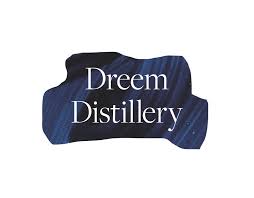In today's world, accessing pornography has never been easier. However, like all things that reward pleasure, the compulsive use of pornographic materials harms the individual and those around them. So at what point does a porn habit become an addiction? Is there hope for recovery if you deem it an issue in your life?
Let’s define addiction
Addiction is an intense urge or craving to participate in or carry out a simple yet repetitive activity to accomplish a temporary sense of pleasure that has the potential to cause physical, social, and/or psychological harm to the individual and their family members.
Chemically, it occurs as a result of a dysfunction of the reward centre of the brain - the part that releases dopamine to give you that sense of euphoria. The brain's reward centre is also closely linked to memory and motivation, meaning that our body remembers what we did that gave us that extra release of dopamine and motivates us to continue acting upon it regardless of consequence.
Examples of addiction include sex addiction, pornography addiction, substance abuse, and gambling. Some people may view certain addictive behaviours as compulsions instead of addiction - whereby activity is repeatedly carried out to relieve signs of anxiety. Such activities include excessive washing of hands, bathing, or obsessive manoeuvring.
What is porn addiction?
Pornography can be a somewhat controversial topic. For example, some people may claim that the introduction of porn into a relationship can help improve sex life and even reduce instances of sexual assault. In contrast, others think it to be immoral and sinful.
Regardless of your beliefs, people do like porn. But for some, pornography use becomes excessive and obsessive. To this end, scientists and researchers actively conduct behavioural addiction studies. Although yet to be added to the Diagnostic and Statistical Manual of Mental Disorders (DSM-5) categorisation model of addiction in the United States, porn addiction is considered a mental health disorder with similar characteristics to other impulse control disorders.
The NHS and World Health Organization both recognise porn addiction as part of the “compulsive sexual disorders” spectrum based on the ICD-10 classification. In addition, both define porn addiction as a behaviour or action resulting in significant distress or personal consequences, such as relationship trouble, legal problems, or work-related issues.
So what’s the problem?
Porn is becoming far too readily accessible, although most people who view porn do not have an addiction. However, handheld smart devices have allowed us access to the internet any time, anywhere. One consequence of this has been easy access to porn for much of the population. Unfortunately, the ease of access to porn has inadvertently made it harder to stop consuming and has led to increased rates of porn addiction.
The worst part?
Viewing porn is often stigmatised by religious and social groups. Some doctors may even consider porn addiction a hypersexual disorder whereby an individual may excessively perform certain sexual activities. To avoid stigma, those addicted to porn may avoid seeking porn addiction treatment, which can significantly impact an individual's well-being and real-life relationships.
By making the facts and figures more available to the public, we can help remove the stigma of porn use and direct those with behavioural addictions to the correct form of treatment.
We must ensure we do not confuse the terms ‘addiction’ and ‘compulsion’ when it comes to the use of pornography. Compulsion often refers to repetitive behaviours carried out with no possible motivation other than to reduce the symptoms of anxiety. In contrast, addictions are actions performed to fulfil a desire for pleasure or reward despite potential negative consequences.
How do you get addicted to porn?
Scientists have debated for years whether the overuse of porn can be referred to as sexual addiction and not just categorised as hypersexual behaviour. However, the World Health Organization (WHO) added compulsive sexual behaviour as a mental health disorder in 2018, so you could argue that overusing pornography can fall under the category. So how exactly is porn addictive?
Several studies have identified that when men who have problematic porn use are subject to pornographic images, their brains react the same way as those who are addicted to and exposed to a drug or alcohol.
While there is little evidence to confirm the exact cause of porn addiction, neuroscience experts suggest that certain behaviours or traits associated with other compulsive disorders may be applicable, such as:
- A chemical imbalance in the brain
- Changes in the way your brain works
- Brain diseases or conditions such as epilepsy, Parkinson’s, Alzheimer’s, or brain tumours
- Having other addictions that can cause the individual to isolate themselves from the public, such as drug or alcohol addiction
Porn addiction in the elderly
Studies have been conducted to determine the long-term effect of chronic pornography use on the elderly, with unsurprising results. The increased availability of internet pornography, the absence of a partner, and time spent locked away at home due to the Covid-19 pandemic drastically increased pornography use in the UK's over 50s population.
How can porn addiction affect an individual?
Over 90% of boys and 60% of girls will have viewed porn at least once before age 18, whether through magazines, late-night television shows, or internet pornography. The fact that most porn sites’ age restrictions can be passed with a simple click to “confirm age” has shown to be problematic, with studies suggesting that the age of exposure to porn is a significant factor that contributes to porn addiction in later life.
But how exactly does porn affect an individual?
Use of porn in relationships
Whilst most adults who regularly view porn do so without any negative consequences, the overconsumption of pornography can become problematic. The use of pornography within a relationship can improve sex, stimulate arousal, and offer the couple a means to try out a new move or two. However, when used excessively, it can start to affect romantic relationships in the following ways:
- The partner of the individual who overconsumes porn may lose self-esteem and confidence, leading to a decline in overall sexual satisfaction.
- Studies suggest that excessively using pornographic material can increase the man's expectation of their partner's sexual performance, which can further contribute to the lack of self-esteem.
Porn addiction and mental health
Relationships aren't the only thing affected by an urge to view porn. Many anecdotes have described instances where individuals have risked losing their job due to watching porn at work. These so-called distractions not only cause the individual mental distress but can lead to financial insecurity due to job loss and having to pay for addiction recovery - all of which contribute to a decline in overall mental health.
Withdrawal symptoms
As per the DSM-V criteria, withdrawal can be referred to as the development of a specific syndrome due to the cessation of a certain activity that has been prolonged and heavy. Porn addiction withdrawal symptoms include:
- Anxiety
- Depression
- Irritability
- Obsessive thoughts
- A longing want for pornography
Can porn addiction be treated?
Shame is one of, if not the most significant, barrier to seeking porn addiction treatment. Most people addicted to porn may fear opening up about their condition and seeking help, especially if the person they usually open up to is a sexual partner. However, like most other non-substance addictions, porn addiction has several viable treatment options, such as cognitive behavioural therapy (CBT), medication, and lifestyle changes.
Medicines to treat pornography addiction
Multiple published studies have focused on the pharmacological or medical treatment of porn addiction. However, the sample sizes have often been small and cannot be applied to all situations. The studies focused particularly on the use of two medications listed below; however, more research is required to confirm the overall efficacy of pharmacotherapy for porn addiction.
- Paroxetine is a selective serotonin reuptake inhibitor (SSRI) used mainly in treating depressive disorders. It has shown promise in the short-term treatment of pornography addiction, but studies report patients have experienced new and potentially distressing sexual behaviours three months after use.
- Naltrexone is an opioid-receptor antagonist that can be used as an adjunctive treatment to psychotherapy to reduce the intensity of sexual urges.
Therapy
The main form of treatment for porn addiction is therapy. Therapy helps those with a problem with pornography process addiction in a way allowing them to understand the cause of their condition with hopes of reversing the behaviour(s) that provoked it in the first place.
Porn addiction therapy is widely available in the UK from mental health professionals who specialise in the following forms of therapy.
1. Cognitive behavioural therapy (CBT)
CBT is one of the UK's most widely used forms of therapy. CBT help people target the reasoning behind their condition and provides practical methods of combatting the symptoms of their condition both inside and outside of the therapist's office.
The most common CBT method used in treating porn addiction focuses on maladaptive thinking patterns and associated actions and beliefs supporting such patterns. A CBT therapist will help individuals address their distorted thinking patterns by focusing on specific aspects of life.
2. Psychodynamic therapy (PDT)
PDT is a powerful tool to help those who struggle with porn addiction rooted in trauma. It can help give insight into these powerful events, allowing the individual to understand, accept, and start releasing those negative feelings and actions. In addition, PDT can help alleviate the shame and guilt associated with porn addiction and drive the individual to receive further treatment or care if needed.
3. Couples counselling
Many spouses of individuals addicted to porn may feel ashamed, betrayed, or even belittled at their partner's preference for using porn for stimulation instead of traditional physical sex. Couples counselling can help families understand or change an organisational structure in a way that empowers them to resolve their problems.
4. Support groups
There are many support and recovery groups available for those addicted to porn. Support groups allow those with porn addiction to speak openly about their condition without being faced with shame. Porn addiction support groups are available to those with the addiction and those affected by a loved one’s unhealthy sexual behaviour. These groups often base themselves on the Alcoholics Anonymous model to ensure confidentiality and privacy when seeking help for the matters at hand.
There’s hope after all...
Putting a label on porn addiction won’t help the matter. Instead, we need to normalise understanding the driving force behind the varied sexual behaviours to move forward in terms of help and treatment. Although scientists are actively working on a solution, many established treatment options are available for those currently struggling with porn addiction. So while there may seem to be no hope for those struggling with the condition, in reality, there is, and it’s probably a phone call away. If you or a loved one are affected by an unhealthy use of pornography, seek out your local recovery centre and ask for a referral to an appropriate therapist or support group.









